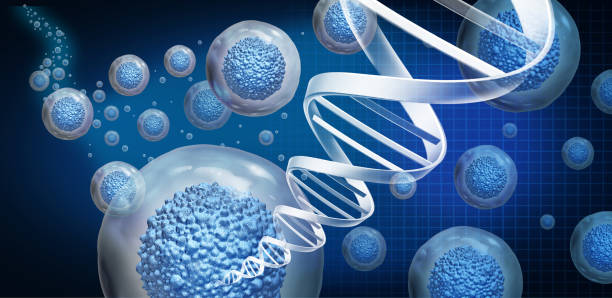Table of Contents
ToggleIn a world plagued by chronic diseases and debilitating injuries, regenerative medicine emerges as a beacon of hope, illuminating the path toward a new era of healing.
This revolutionary field harnesses the remarkable power of stem cells and cutting-edge techniques to regenerate damaged tissues and restore functionality to the human body.
With its potential to transform healthcare as we know it, regenerative medicine stands at the forefront of scientific progress, captivating the imaginations of researchers, physicians, and patients alike.
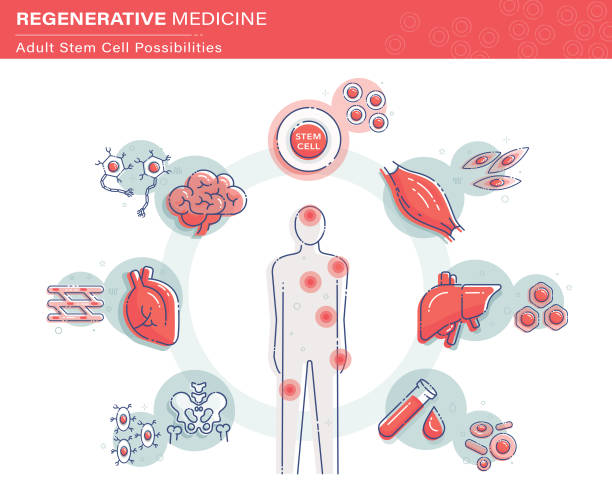
The Power of Regenerative Medicine in Healthcare
Regenerative medicine possesses an unparalleled potential to transform healthcare by addressing the root causes of illnesses rather than merely treating symptoms.
By leveraging the inherent capacity within our bodies to heal themselves using stem cells, scientists are paving the way for groundbreaking treatments that can regenerate damaged tissues and organs.
This promising approach could bring about a paradigm shift in medical practice – moving from palliative care towards genuine rejuvenation.
- Cost Reduction: Regenerative medicine offers the promise of reducing healthcare expenses. This potential saving stems from its ability to address chronic conditions more effectively than traditional methods.
- Alternative to Long-term Medications: Traditional treatments often require lifelong medication or frequent hospital visits. Regenerative medicine, on the other hand, aims to offer therapies that stimulate the body’s own capacity for cell regeneration, reducing the need for continuous treatments.
- Enhanced Quality of Life: Beyond mere treatment, regenerative medicine has the potential to greatly improve patients’ overall quality of life. This is achieved by targeting the root causes of ailments, leading to more comprehensive health improvements.
- Alleviation of Healthcare Strains: Healthcare systems worldwide face challenges due to rising costs. The transformative nature of regenerative medicine could provide solutions that alleviate these financial strains.
What is Regenerative Medicine?
Core Principles of Regenerative Medicine
Regenerative Medicine aims to restore the body’s innate ability to regenerate and rejuvenate itself.
At its core, regenerative medicine harnesses the power of our own cells, particularly stem cells, to repair damaged tissues and organs.
From the ancient civilizations that first explored this concept to the cutting-edge scientific breakthroughs of today, regenerative medicine stands as a beacon of hope for those struggling with chronic diseases and debilitating injuries.
Ancient Roots of Healing Practices
Regenerative medicine finds its origins in the wisdom of our ancestors who possessed an intuitive understanding of nature’s capacity for renewal.
Ancient civilizations such as the Egyptians, Greeks, and Chinese were well-versed in techniques aimed at stimulating tissue regeneration.
In Egypt, papyrus scrolls dating back thousands of years bear witness to their knowledge of wound healing using natural substances like honey and plant extracts.
The Greeks were no strangers either; they employed clay compresses and herbal remedies for accelerating tissue repair.
Ancient Civilizations’ Regenerative Techniques
The Mayans from Central America used jaguar teeth as crude drills for skull trepanation – a procedure believed not only to relieve cranial pressure but also stimulate brain regeneration; talk about thinking outside the box!
Traditional Chinese medicine, incorporated acupuncture by inserting thin needles into specific points on the body. People believed this balanced the energy flow (qi) for overall well-being and promoted tissue regeneration.
Rediscovering & Refining Modern Practices
While ancient civilizations laid the foundation, it is the modern era that has truly unveiled the full potential of regenerative medicine.
Rapid scientific progress and technological advancements have propelled us into a new frontier of healing. We are now able to isolate and culture stem cells, paving the way for groundbreaking treatments.
These remarkable cells hold immense regenerative powers, capable of transforming into different cell types and replenishing damaged tissues.
The future holds immense possibilities; let’s not miss out on this promising journey towards true healing.

Unveiling Stem Cells’ Extraordinary Potential
These remarkable cells possess an extraordinary potential to replenish and repair damaged tissues, offering a beacon of hope for countless individuals suffering from degenerative diseases and injuries.
Stem cells, in all their magnificent varieties, are nature’s architects, masterfully orchestrating the intricate symphony of regeneration within our bodies.
Embryonic Stem Cells (ESCs):
- ESCs are derived from early-stage embryos.
- They have the unique ability to differentiate into almost any type of cell in the human body.
- Because of their versatile nature, they’ve generated significant excitement among the scientific and medical communities. The hope is to use them for organ growth and replacement.
Adult Stem Cells:
- These are stem cells that exist within adults and are scattered throughout various tissues and organs.
- Unlike ESCs, adult stem cells have a more restricted ability in terms of the types of cells they can become.
- They play a crucial role in regenerating specific tissues where they are found. Examples include hematopoietic stem cells in bone marrow that can give rise to new blood cells and neural stem cells in the brain that can facilitate the growth of new neurons.
Induced Pluripotent Stem Cells (iPSCs):
- iPSCs are a breakthrough development in stem cell research.
- They’re derived from adult cells and are reprogrammed to have the same pluripotent capabilities as embryonic stem cells.
- Shinya Yamanaka and his team were pioneers in developing the technique to create iPSCs.
- One of the most significant benefits of iPSCs is that they can be derived without the ethical concerns associated with embryonic stem cell use.
- Using iPSCs, it’s possible to leverage a patient’s own cells for regenerative therapies, ushering in opportunities for personalized medicine.
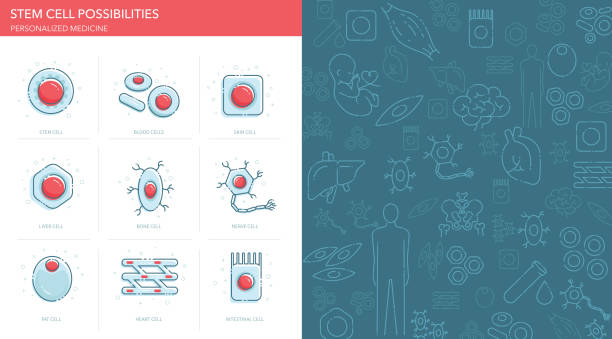
Stem Cells in Tissue Repair & Regeneration
Stem cells possess two fundamental characteristics that underpin their regenerative prowess: self-renewal and differentiation.
Self-renewal enables stem cells to divide indefinitely, replenishing their numbers throughout an organism’s lifespan.
Differentiation is their remarkable ability to transform into specialized cell types that comprise various tissues and organs.
When an injury occurs or disease strikes, these extraordinary cells respond with precision and purpose.
Once at the scene of devastation, stem cells can differentiate into specific cell types needed for repair or secrete bioactive molecules such as growth factors, cytokines, and extracellular matrix components that encourage local tissue regeneration.
From rebuilding damaged tissues to rekindling hope in the hearts of those suffering from debilitating conditions, these humble cells are spearheading a new frontier in healthcare.
Organ Creation via Tissue Engineering
Reconstructing the Miracles of Nature
Tissue engineering, a pillar of regenerative medicine, has emerged as a beacon of hope for those battling debilitating organ failures.
In this awe-inspiring process, scientists utilize biocompatible scaffolds as templates for cellular growth and development.
By precisely controlling the composition and structure of these scaffolds, we can facilitate cell adhesion, migration, and proliferation, unlocking transformative potential.
This cutting-edge technique not only promises new horizons in organ transplantation but also offers a glimpse into a future where supply limitations no longer dictate patients’ fate.
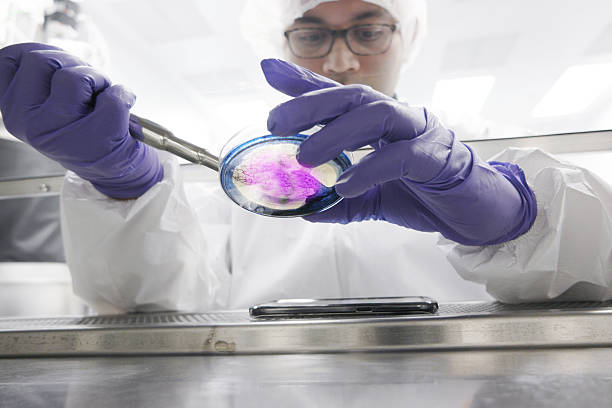
Bioprinting: From Sci-Fi to Reality
Pioneering Beyond Imagination
Bioprinting technology has revolutionized the field by enabling scientists to fabricate complex three-dimensional structures with unparalleled precision.
By utilizing bio-inks containing living cells combined with biomaterials such as hydrogels or extracellular matrices (ECMs), bioprinters pave the way for the creation of functional tissues and organs.
These machines, guided by computer-aided design (CAD) models, deposit bio-inks layer upon layer, slowly constructing intricate organ-like structures.
While still in its nascent stages, bioprinting holds tremendous potential.
It offers a pathway to address the ever-growing organ shortage crisis, providing hope to those languishing on transplant waiting lists.
Ethical considerations surrounding the use of stem cells and patient-specific printing materials also warrant careful deliberation.
Gene Therapy: Blueprint for Healing
The Promising Frontier of Genetic Revolution
Armed with cutting-edge gene editing tools such as CRISPR-Cas9, scientists now possess an unprecedented ability to manipulate genes with remarkable precision.
By replacing or repairing faulty genes responsible for diseases or disorders, gene therapy aims to correct underlying genetic aberrations at their roots.
This groundbreaking approach challenges traditional treatment paradigms by targeting ailments directly at their genetic origin rather than alleviating symptoms superficially.
The potential of gene therapy is staggering. Diseases once considered incurable may one day succumb to the swift sword of molecular intervention.
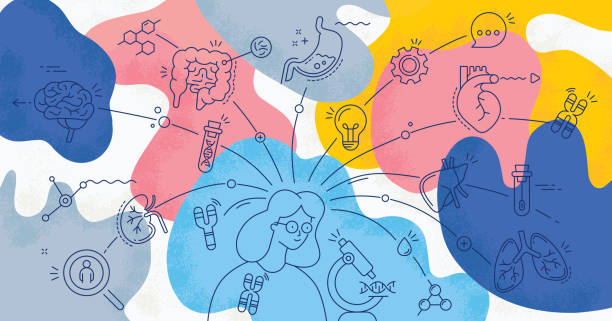
Conclusion
Regenerative medicine stands poised at the precipice of transforming healthcare as we know it—a triumph that traverses the boundaries of science, imagination, and human perseverance.
Tissue engineering, bioprinting, and gene therapy represent remarkable strides toward regenerating damaged tissues and rewriting the course of medical history.
While these cutting-edge techniques hold vast potential to revolutionize healthcare, we must temper our enthusiasm with a sober acknowledgment of their complex challenges.
Ethical considerations, regulatory frameworks, and scientific validation remain vital pillars in ensuring the safe and responsible translation of these innovative treatments from the lab to the clinic. So let us embrace this era of healing with unwavering determination.

